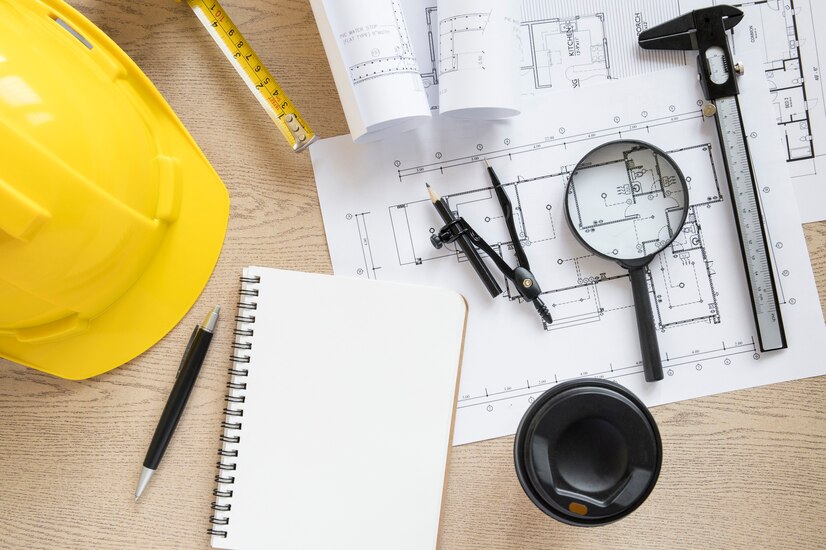As urban landscapes evolve, the symbiosis between geodesy and construction becomes increasingly apparent. Both fields, while distinct in their methodologies and applications, share an intrinsic relationship that underpins successful building projects. Understanding this connection provides critical insights into the feasibility, safety, and sustainability of construction work. This article delves into the collaborative nature of these disciplines, their historical context, and the innovative trends that are shaping the future of infrastructure development.
Geodesy: The Science of Measurement and Observation
A Brief Introduction
Geodesy, the scientific discipline concerned with measuring and understanding Earth’s geometric shape, orientation in space, and gravitational field, is often regarded as a specialized field of study. However, its relevance extends far beyond academia. The implications of precise measurement are profound, influencing everything from international treaties concerning land ownership to the practicalities of civil engineering and construction.
Geodesists employ an array of tools and techniques to achieve precise measurements. Traditional methods have evolved significantly, incorporating satellite-based systems that yield real-time data on changes in land elevation, tectonic movements, and other geo-spatial characteristics. As cities expand and populations surge, the demand for precision in geodesy only intensifies, creating a compelling interface with construction work.
The Importance of Accurate Measurements
Accurate geodetic measurements inform a range of construction-related activities, from site selection and layout to post-construction assessments. For instance, surveyors utilize geodetic data to establish control points that serve as the backbone for building projects. By ensuring that structures align precisely with designated coordinates, geodesists help mitigate risks associated with misalignment, subsidence, and structural failure.
The relationship is not one-sided, of course. Construction practices also influence geodesy. Projects that change the landscape, such as highways, bridges, and skyscrapers, often necessitate follow-up geodetic measurements to monitor shifts in the surrounding environment. This dynamic interaction fosters a continuous feedback loop that enhances urban planning, infrastructure development, and environmental stewardship.
Construction: Bridging the Gap Between Design and Reality
The Role of Engineering and Design
While geodesy lays the groundwork with measurements and data analysis, construction transforms designs into tangible structures. Civil engineers are tasked with interpreting geodetic data to create functional and aesthetically pleasing designs that meet regulatory requirements and environmental sustainability goals.
On-site construction, however, is where the interdependence truly shines. Engineers rely on accurate geodetic surveys to inform the construction process, enabling them to make real-time adjustments as needed. This finesse during building can mean the difference between merely erecting a structure and ensuring that it integrates seamlessly with the existing environment.
Consider the example of high-rise buildings in densely populated areas. Engineers must grapple not only with the architectural vision but also with geodetic uncertainties that may arise from subsurface conditions. If the foundation is compromised due to unforeseen geological factors, the implications can be dire. Thus, geodesy plays a critical role in the preliminary stages of construction, allowing engineers to develop strategies that mitigate risk and ensure structural integrity.
The Impact of Technology on Construction Practices
Today, technology is ushering in a new era of efficiency and precision in construction. Geographic information systems (GIS) and advanced modeling techniques enhance architectural design, bringing geodetic data to the forefront of planning processes. These technologies enable stakeholders to visualize how new structures will interact with their environments long before the first shovel hits the ground.
Moreover, cutting-edge developments in drone technology and automated surveying equipment further streamline the workflow. By integrating real-time data collection with construction management software, firms can maintain alignment with original designs, leading to shorter project timelines and reduced costs. This amalgamation of geodesy and construction technologies yields unprecedented accuracy and efficiency.
The Future: Converging Paths and Sustainable Development
A Move Toward Interdisciplinary Collaboration
The future of construction will hinge on the constructive dialogue between geodesists and construction professionals. As urban centers continue to grow, the complexity of projects intensifies. This complexity demands a collaborative approach that synthesizes diverse expertise.
Moreover, the growing importance of sustainability in construction creates new avenues for interdisciplinary collaboration. Geodesists can offer critical insights into the ecological impact of construction practices, guiding builders in minimizing their carbon footprint. Understanding how terrain, water flow, and other geophysical elements interact with proposed constructions allows for more sustainable decisions.
Innovative approaches such as green building and smart infrastructure require this synergy. Cutting-edge construction practices rely on quality geodetic data to evaluate materials for minimizing resource consumption and maximizing efficiency. As public interest in environmental sustainability solidifies, the connection between geodesy and construction will only grow tighter.
Challenges Ahead: Navigating Risks and Solutions
While the union of geodesy and construction yields remarkable benefits, it is not without its challenges. As urban environments become increasingly complex, managing unforeseen discrepancies remains a concern. Whether it’s adapting to unanticipated geological features or responding to regulatory changes, professionals in both fields must remain vigilant and adaptable.
The integration of advanced technologies does offer some solutions. Enhanced predictive modeling driven by machine learning and AI can analyze vast datasets to identify potential risks before they manifest on the construction site. Such foresight can lead to preemptive modifications, saving both time and resources.
Conclusion: Building Strong Foundations
The interconnectedness of geodesy and construction is not merely a product of necessity; it is a hallmark of progressive infrastructure development. This partnership, characterized by precision and innovation, lays the groundwork for resilient urban environments and smarter cities.
As we reflect on the profound implications of this relationship, one cannot help but draw parallels to the best articles featured in leading publications—pieces that challenge conventional wisdom and provoke thoughts about our collective future. Just as those narratives elevate public discourse, the integration of geodesy into construction paves the way for informed decision-making, sustainability, and progress.
In a continuously evolving landscape, the symbiosis between these two fields will undoubtedly shape the way we build and live. As we continue to navigate the complexities of urbanization, let us appreciate the meticulous groundwork laid by geodesists and the creativity brought forth by construction professionals—a partnership that is more vital now than ever before.

Leave a Reply